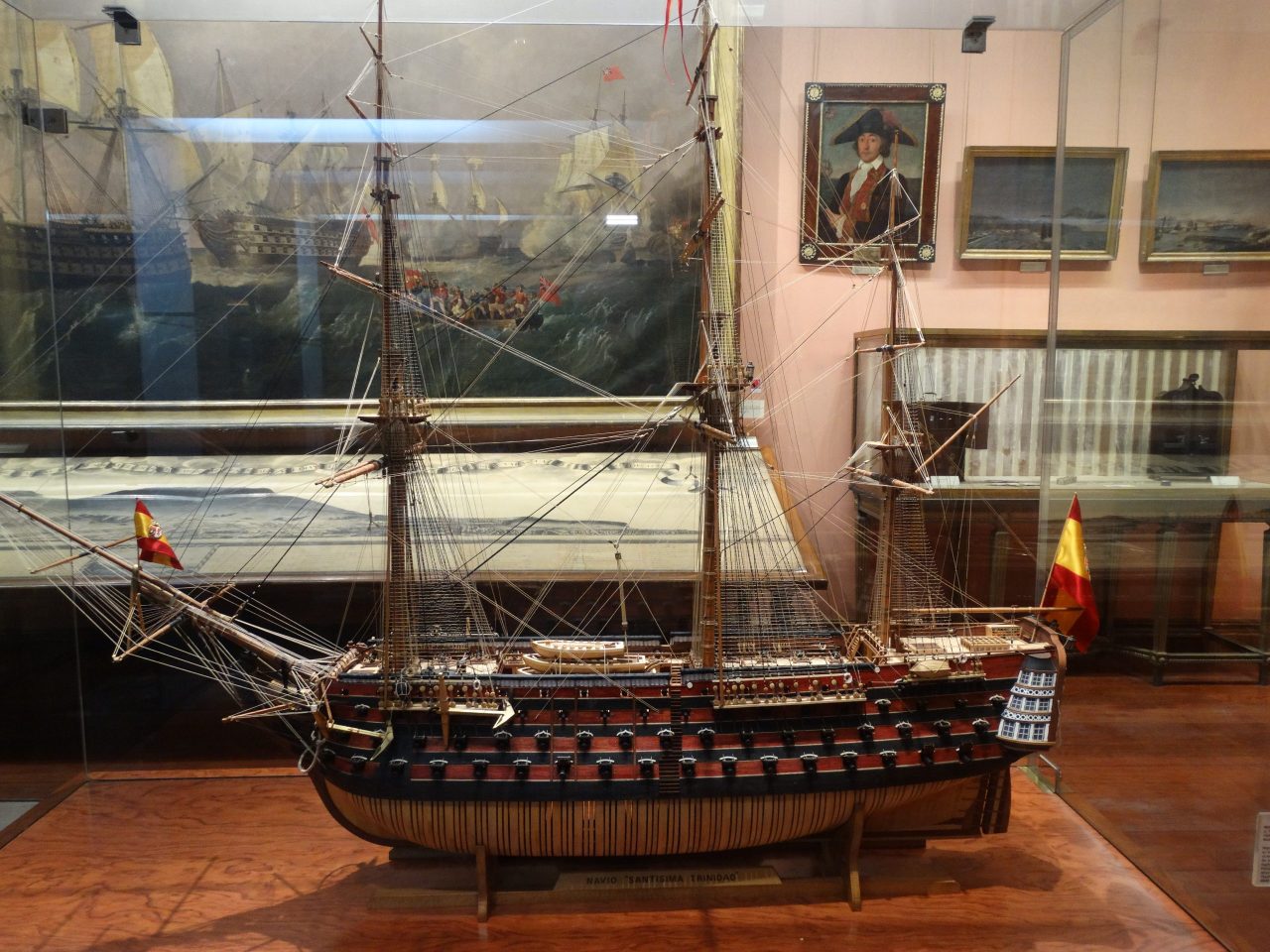
Model of the Santísima Trinidad at the Museo Naval de Madrid. Photo by Nicolás Pérez, CC BY-SA 4.0
The 18th century, often referred to as the Age of Sail, witnessed the emergence of powerful sailing vessels that played a pivotal role in shaping the course of history. Among these iconic vessels, the Nuestra Señora de la Santísima Trinidad stands out as a true testament to the grandeur and might of 18th-century warships. This majestic vessel, which participated in the historic Battle of Trafalgar in 1805, embodies the essence of the era, showcasing the remarkable combination of advanced naval technology and maritime prowess.
Age of Sail: Revolution in Exploration and Naval Warfare
The 18th century marked a period of significant advancements in shipbuilding and navigation techniques. The Age of Sail saw the construction of awe-inspiring sailing vessels that traversed the world’s oceans, enabling exploration, trade, and warfare on an unprecedented scale. These ships were characterized by their towering masts, billowing sails, and intricate rigging systems that allowed them to harness the power of the wind, making them the epitome of maritime innovation.
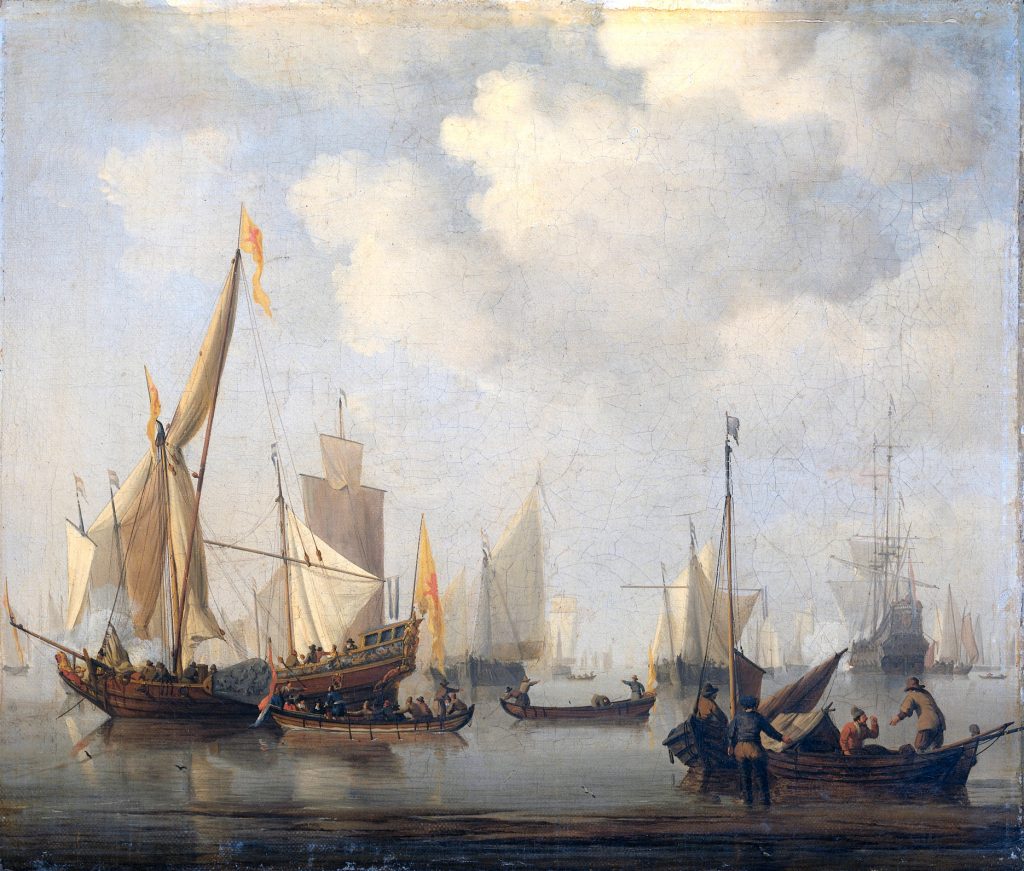
The 18th century was marked by an insatiable thirst for exploration and expansion. Nations across the globe vied for dominance in trade, colonization, and territorial acquisition. The Age of Sail facilitated these ambitions by providing the means to traverse vast oceans, opening up new frontiers and possibilities. Sailing ships, equipped with intricately designed rigging and advanced navigation techniques, allowed intrepid explorers to chart uncharted waters, leading to the discovery of new lands and the establishment of trade routes that connected continents.
The Age of Sail was not only a time of peaceful exploration and trade but also a period of intense naval rivalry and conflict. Sailing ships were transformed into formidable war machines, engaging in epic battles that would shape the destinies of nations. Ship-of-the-line vessels, armed with rows of cannons on multiple decks, engaged in titanic clashes for naval supremacy. The strategic prowess of naval leaders and the sheer might of these vessels left an indelible mark on the annals of military history.
The Santísima Trinidad: Queen of the Seas
At the heart of this maritime revolution was the Nuestra Señora de la Santísima Trinidad, often simply referred to as Santísima Trinidad. Launched in 1769, this Spanish ship of the line was a true masterpiece of shipbuilding, boasting a staggering four decks and a complement of over 1,000 crew members. What set the Santísima Trinidad apart was its sheer size and imposing presence, making it one of the largest and most formidable warships of its time.
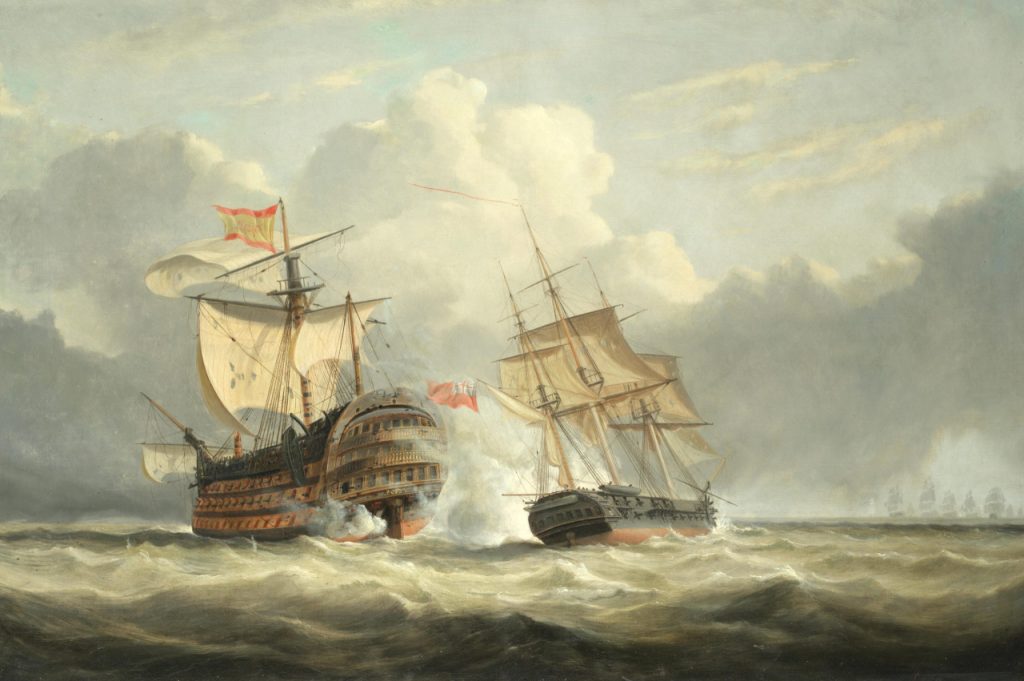
A Floating Fortress
The Santísima Trinidad was a true marvel of naval engineering, designed to strike fear into the hearts of its adversaries. With its three tiers of imposing gun decks bristling with cannons, it was a force to be reckoned with on the open seas. This warship could unleash a devastating barrage of firepower, making it a formidable opponent in naval engagements. Its impressive armament and robust construction exemplified the fusion of art and science that characterized shipbuilding during the Age of Sail.
Cannons and Firepower
Santísima Trinidad was known for its extensive battery of cannons, strategically positioned across its three massive gun decks. In 1795, the fourth deck was created.These decks were lined with rows of cannons on both sides of the ship, allowing for a broadside assault that could unleash a devastating barrage of firepower. The ship’s armament included cannons of varying sizes, each serving a specific purpose in naval warfare.
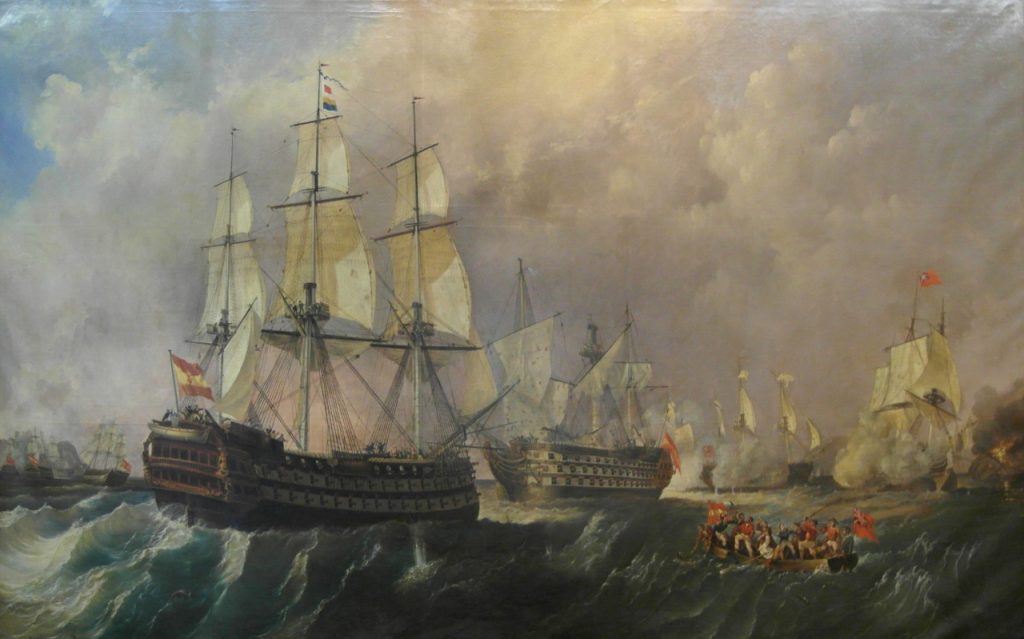
Deck Layout
Lower Gun Deck: This deck housed the largest cannons, typically 36-pounders and 24-pounders. These cannons were capable of firing heavy iron balls with devastating impact, making them effective at breaching the hulls of enemy ships and causing significant damage.
Middle Gun Deck: The middle deck also accommodated 24-pounder cannons, along with a mix of smaller 18-pounder and 12-pounder cannons. These cannons provided a balance between firepower and maneuverability, enabling the ship to engage both larger enemy vessels and smaller, more agile opponents.
Upper Gun Deck: The upper deck carried a mix of 12-pounder and 8-pounder cannons. While slightly smaller in caliber, these cannons still contributed to the ship’s overall firepower and versatility in battle.
Broadside Weight: The Santísima Trinidad’s broadside weight—the combined weight of projectiles fired in a single broadside salvo—was staggering. It is estimated that the ship could unleash a broadside weighing well over 1,000 pounds, making it a formidable force in any naval engagement.
The Battle of Trafalgar: A Historic Encounter
The crowning moment of Santísima Trinidad’s legacy came during the Battle of Trafalgar in 1805. This pivotal naval engagement between the British Royal Navy, led by Admiral Lord Nelson, and the combined fleets of France and Spain, showcased the true capabilities of 18th-century warships. The Santísima Trinidad, flying the Spanish flag, played a central role in the battle as part of the Franco-Spanish fleet.
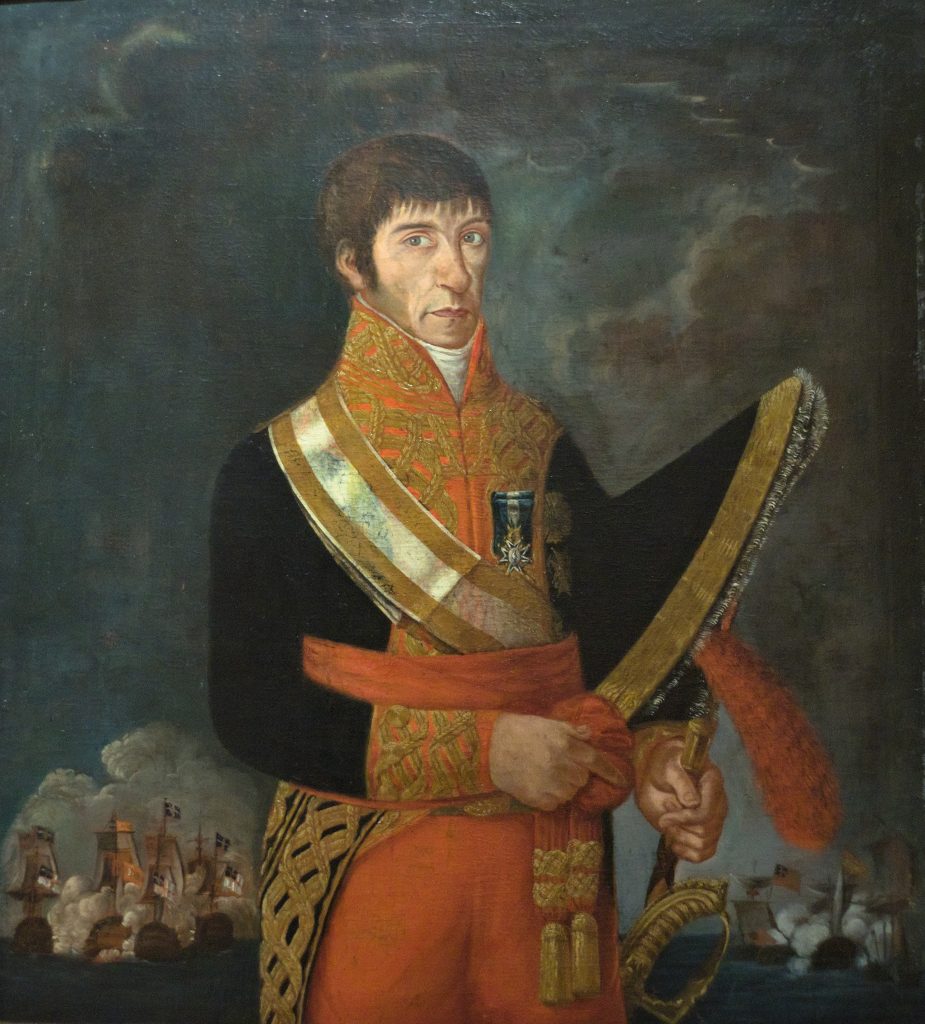
John Fincham, in his History of Naval Architecture, writes about the ships of “stronger probability” after the battle. One of those was Santísima Trinidad.
As the battle raged on, the Santísima Trinidad found itself at the center of the maelstrom. Despite its impressive armament, the ship’s sheer size made it a target for the relentless British assault. Its steadfast crew fought valiantly, but the odds were against them. The ship endured a barrage of cannon fire, and its rigging and masts were severely damaged. Yet, the Santísima Trinidad stood resolute, a testament to the determination and spirit of those who sailed on her decks.
Legacy and Enduring Impact
Although the Battle of Trafalgar ultimately ended in victory for the British, the Santísima Trinidad left an indelible mark on naval history. Its participation in the battle highlighted the significance of naval supremacy during this era and showcased the awe-inspiring spectacle of 18th-century warships in combat. The ship’s legacy continues to inspire maritime enthusiasts and historians alike, offering a glimpse into the challenges and triumphs of seafaring during the Age of Sail.
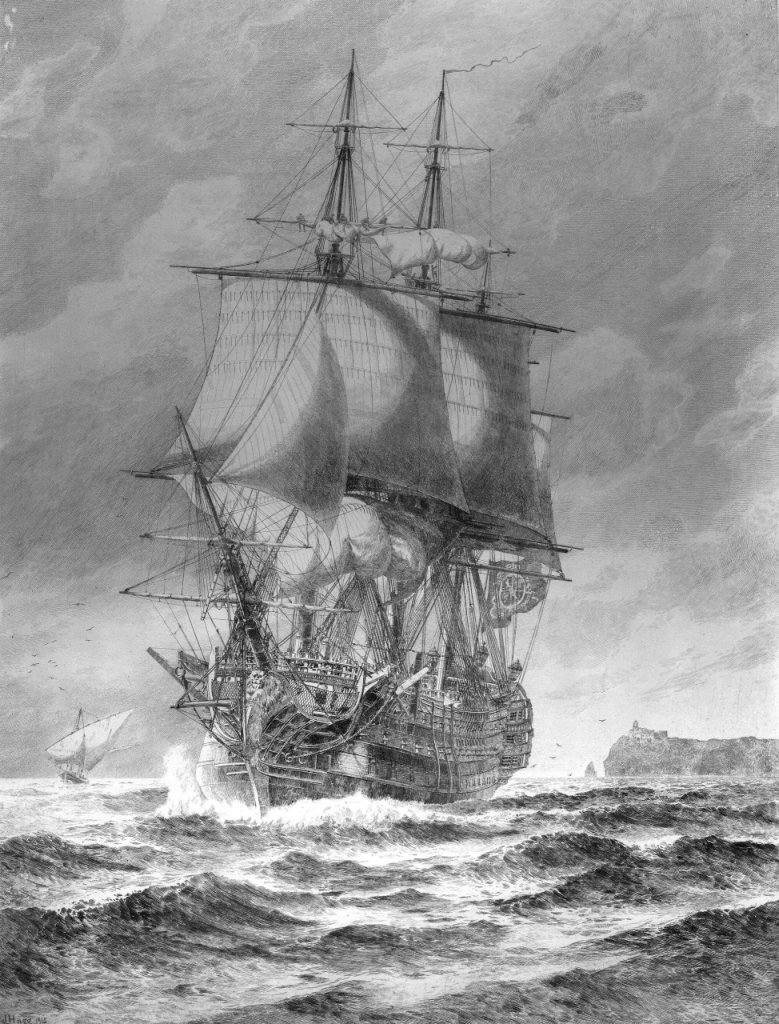
The Nuestra Señora de la Santísima Trinidad, a towering testament to the naval might of the 18th century, remains an enduring symbol of the Age of Sail and the formidable warships that defined the era. As a floating fortress with a storied history, it showcased the pinnacle of maritime engineering and played a significant role in the Battle of Trafalgar. The legacy of the Santísima Trinidad serves as a reminder of the remarkable achievements of 18th-century shipbuilding, made for stormy seas. In the annals of naval history, the Santísima Trinidad shines as a beacon of maritime prowess and enduring legacy.